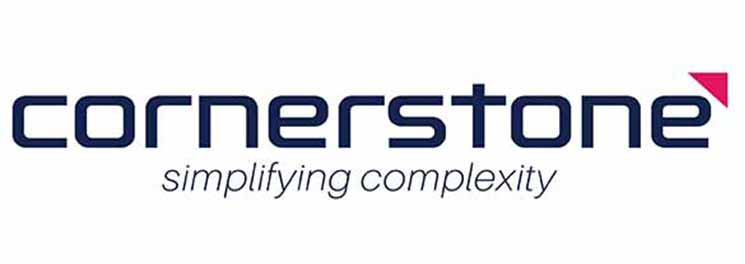
The outside-in advantage: Leveraging external collaboration for supply chain excellence
Reaching internal supply chain maturity is just the beginning. To stay ahead, it’s essential to foster strategic relationships with external partners that deliver long-term benefits.
If you’ve ever done business in Japan, you may be familiar with the concept of the keiretsu, a set of companies with interlocking business relationships and interests that have dominated the Japanese economy in recent decades.
The ecosystems surrounding major car manufacturers such as Toyota, Nissan and Mitsubishi are prime examples of keiretsu. Members of a keiretsu work closely in areas such as R&D, procurement and marketing, leading to synergistic benefits.
In the Supply Chain context, keiretsu plays an important role in fostering close relationships and collaboration between manufacturers, suppliers and distributors. This integrated approach drives efficiency, coordination and stability across the Supply Chain, contributing to streamlined production processes and consistent product quality.
While we’re not advocating a wholesale pivot to keiretsu in Australia – in fact, the structure may even be falling out of favour in Japan as Supply Chains continue to globalise – there’s no denying they do one thing incredibly well: collaboration.
What’s more, everyone benefits by working towards win-win outcomes for the group. It provides a sharp contrast to the “I win, you lose” mentality that still permeates many local external customer/supplier relationships.
Is it possible to bring the best of keiretsu collaboration Australian organisations? The answer is yes – and it all comes back to the discussion around Supply Chain maturity.
Supply Chain maturity: A recap
For many organisations, making it to Stage Three on the Gartner maturity scale (out of a possible five) is likely to be the current goal – that is, all internal teams and functions are integrated with the Supply Chain and operating from a single plan.
Let’s say you’ve reached the stage when you have established your internal integrated business planning (IBP) process and it’s rolling along nicely from month-to-month. Perhaps it’s taken a couple of years of focused effort on stage-based innovation, with a series of bite-sized improvement projects taking your Supply Chain processes from bad to good.
This is what’s known as Stage Three maturity, and it’s a very nice place to be indeed. Particularly so if you were setting out from very basic maturity with siloed departments and your own version of the dreaded Franken-System (what we lovingly call the messy middle of planning and analytics tools).
Is it time to stop and pat yourself on the back for achieving IBP nirvana? Not quite yet.
While you can celebrate the very significant milestone of getting your internal IBP processes into shape, there is a significant opportunity if you are prepared to keep going.
It all comes down to some of the principles that underpin keiretsu: building collaboration, visibility and more strategic partnerships with external partners (also known as Stage Four Supply Chain maturity).
What does external collaboration mean?
Stage Three maturity may deliver some productivity enhancements and cost reductions through connections to supply management and third-party logistics providers, however Stage Four takes this to a strategic (rather than transactional) level.
It can be helpful to think of Supply Chain’s external relationships in two main buckets:
An IBP process that has good external and internal integration can build on the strengths of a well-defined supplier performance management program, which regularly benchmarks suppliers against key criteria such as quality, reliability and cost-effectiveness. However, the Stage Four conversation will also be a broader one, focusing on trust, joint productivity and mutually beneficial outcomes.
We’ve even seen some Stage Four organisations describe themselves as the facilitator between customers and suppliers, with success and performance of the two inextricably linked.
What are some of the benefits of external IBP integration?
Enhanced collaboration with your external partners can be both an offensive and a defensive play. For example, with greater visibility and collaboration, over time you’ll see the Supply Chain move from reactive behaviour (managing avoidable, unexpected surprises such as stock-outs and overstocks) to responsive (navigating an unpredictable landscape in an agile and productive manner).
We’ve also seen organisations leverage it as a competitive differentiator. Let’s say you’re one of five suppliers who can provide a widget and there is little to tell each of you apart in terms of product quality and price. If you are able to provide proactive spend analysis information in real time, your customer will likely appreciate the opportunity to build long-term value with you as part of a strategic relationship.
Maintain your forward momentum
We’re the first to say that reaching Stage Three maturity in your Supply Chain is a commendable milestone, however the journey towards optimisation doesn’t end there.
While you don’t need to build your own keiretsu, organisations can adopt some of the key principles. Strategic, collaborative relationships with external partners not only enhances visibility and trust, it also drives mutual productivity and competitive advantage.
Ultimately, integrating both internal and external aspects of your Supply Chain through mature IBP processes ensures resilience, agility and sustained success in an ever-evolving market landscape.
We are enablers of change and transformation in Supply Chain, Information Management, Financial Planning & Analytics, Management Consulting, Project Management, and Managed Application Services. Contact us to find out more about how we work with your teams or call 1300 841 048.





